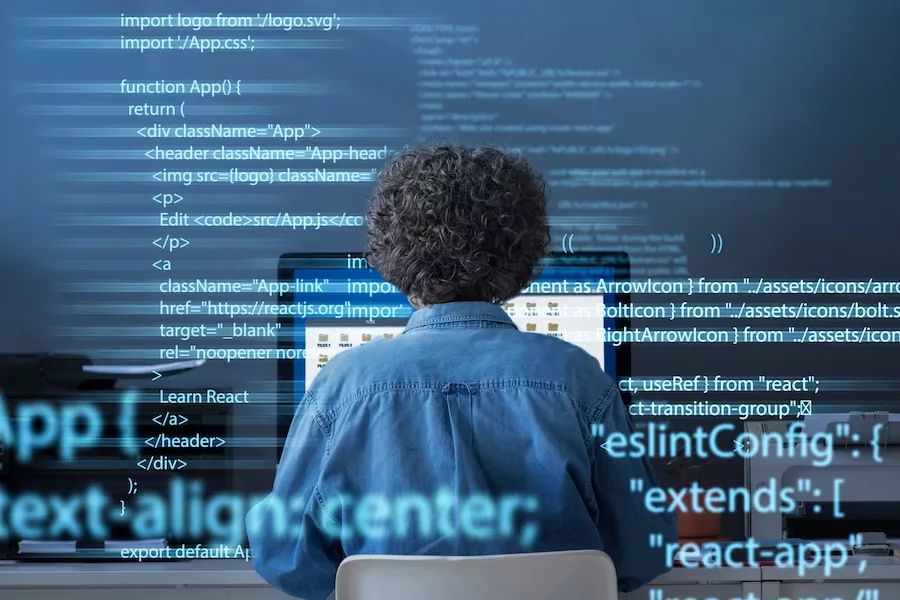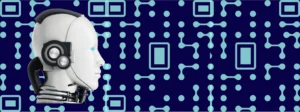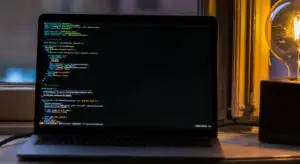
Louis J. Perry, a 27-year-old laborer, is taking steps to switch careers from his physically demanding job to computer programming. With no prior experience in coding, Louis has turned to online resources and forums to learn Python, a beginner-friendly coding language. Despite encountering challenges with understanding technical jargon, L.J. is determined to find suitable learning materials and advice to help him master coding.

✅ AI Essay Writer ✅ AI Detector ✅ Plagchecker ✅ Paraphraser
✅ Summarizer ✅ Citation Generator
Key Takeaways:
- Set clear, personally meaningful goals and develop consistent studying habits to switch successfully from a non-tech career to coding.
- Start with Python to grasp basic programming concepts, then transition to web development.
- Move beyond tutorials to try to code independent projects.
- Join learning communities or free bootcamps to gain structured learning, support, and access to a range of resources.
Setting The Goal
Every significant journey begins with setting a concrete goal. The prospect of switching careers from manual labor to coding is no different. The objective could be as ambitious as starting a company, developing an innovative app, or designing a dynamic website. The essence is for the aim to be personally meaningful and motivating enough to provide resilience during tough times. While one may come across instances of rapid learning, the majority should expect this process to be more of a marathon than a sprint. Self-study with coding is strongly recommended for burnout resistance. The best strategy is to develop a consistent studying habit, even if it means starting with as little as 10 minutes each day. Gradually, one can increase their study time as they grow comfortable with the routine.
Choosing The Field
A significant decision to make at the onset is the field to focus on. Web development comes highly recommended due to its practicality and abundant resources. However, before plunging into web development, it’s beneficial to spend about a month with Python. Known for its readability and simplicity, Python serves as a gentle introduction to programming fundamentals. With the understanding of variables and functions solidified, transitioning to web development becomes a smoother process.
Picking A Specialization
Web development is a vast field with three main areas of specialization: Frontend, Backend, and Full Stack. It’s advisable to start with Frontend, which involves the aspects of a website that users interact with. This is because most new hires are initially assigned to Frontend roles. Proficiency in Frontend also serves as a springboard for learning Backend and eventually, Full Stack development.
Learning and Practicing
The learning phase typically begins with a beginner course. Multiple platforms offer comprehensive courses that explain concepts thoroughly. It’s vital to beware of “tutorial hell,” where one spends too much time on tutorials without moving to more advanced practice.

The learning progression should be from in-depth tutorials to “code along,” where one follows along with a video of someone developing a somewhat complex site. After understanding the rationale and process, it’s beneficial to replicate the project independently. After a couple of such experiences, one can begin developing their own projects, applying and testing what they’ve learned so far.
Hands-on Experience
Diving into hands-on experience right from the start can yield impressive results. Something as simple as writing a basic program that converts a binary to a decimal can provide a sense of achievement and motivation. This hands-on approach facilitates practical understanding and can keep one engaged in the learning process far better than merely following tutorials.
Joining Communities
Being part of a learning community can offer valuable support during the journey. There are several free bootcamps and communities where people at various stages of learning programming come together. These platforms can provide structured learning and resources for everything from basic to advanced concepts in web development.
Course Recommendations
A good course can make a significant difference in the learning experience. The MOOC Python Programming 2023 from the University of Helsinki, for instance, is a free, beginner-friendly course that introduces learners to computer science in a practice-oriented manner. It guides students from working in the browser to using Python locally on their computer, providing all necessary setup instructions.
A Beginner’s Guide to Building Your First Personal Portfolio Website

Stepping into the digital world, having a personal portfolio website can be your golden ticket to showcasing your skills, experiences, and personal brand to the world. Whether you’re an artist, a writer, a designer, or a freelancer of any kind, a well-curated portfolio website can help you stand out from the crowd. But how do you start building one?
Don’t worry, it’s easier than you think, and this beginner’s tutorial will guide you through the process:
- Choose a Platform: Start by choosing a platform to host your website. Platforms like WordPress, Wix, or Squarespace are beginner-friendly with a variety of customizable templates.
- Pick a Domain Name: Your domain name should be simple, memorable, and representative of you or your brand. You can buy a domain from services like GoDaddy or Namecheap.
- Choose a Template: Pick a template that fits your style and profession. Make sure it’s clean, easy to navigate, and mobile-friendly.
- Customize Your Site: Start customizing your site by adding your logo, changing color schemes, or choosing fonts that align with your personal brand.
- Add Your Content: Create pages for your portfolio, about me, contact, and blog if you have one. Ensure your portfolio pieces are high-quality images or links, and provide context for each piece.
- SEO Optimization: Use keywords relevant to your industry in your site content to improve its visibility on search engines.
- Test Your Site: Ensure all links work, images load properly, and the site is easy to navigate. Ask friends or mentors for feedback.
- Launch: Once everything is set and you’re happy with how it looks, it’s time to publish your website.
- Update Regularly: Keep your portfolio up-to-date with your latest work and achievements.
Remember, building a personal portfolio website is an ongoing process of updates and refinement. So, don’t stress about making it perfect from the get-go. Happy building!
Read more:
Bachelors or Bootcamp – Choosing the Right Path for Aspiring Coders
Why Do Universities Mostly Teach Theoretical Courses and not Real Coding Skills?
How to Learn Python: 10 Best Free and Paid Resources To Try in 2023
Follow us on Reddit for more insights and updates.





Comments (0)
Welcome to A*Help comments!
We’re all about debate and discussion at A*Help.
We value the diverse opinions of users, so you may find points of view that you don’t agree with. And that’s cool. However, there are certain things we’re not OK with: attempts to manipulate our data in any way, for example, or the posting of discriminative, offensive, hateful, or disparaging material.